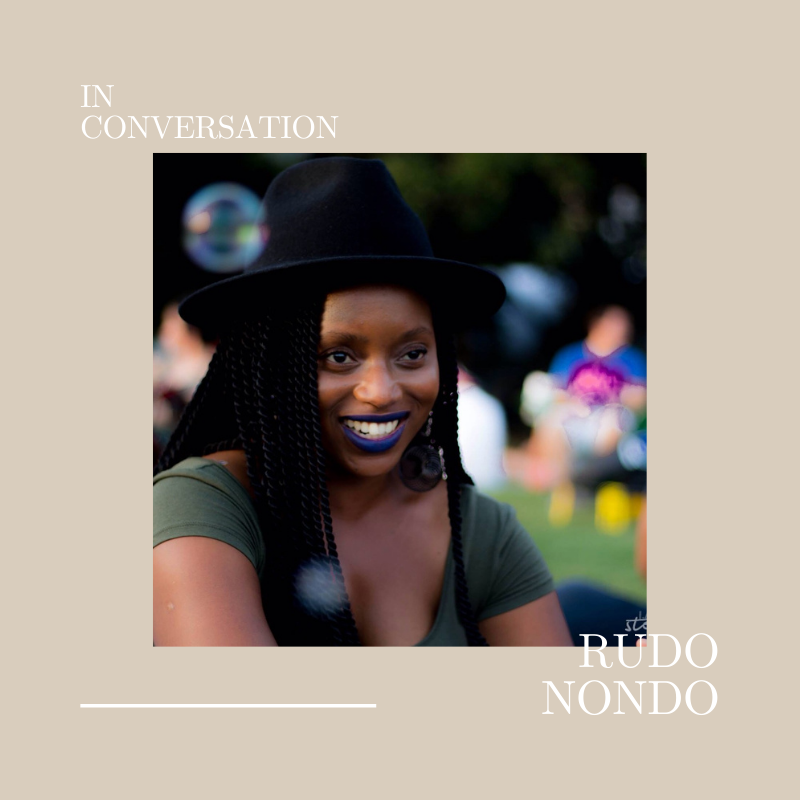Tell us about yourself, your work and how you got started.
I am a fashion/ product designer based in Zimbabwe. I started in 2013 after pursuing my purpose and realizing I had an interest in sustainability and sustainability in fashion in particular. As I have evolved within the space I have been taking storytelling into account and have been more mindful about what I am communicating through my work and how I am carrying out my work in terms of leaving a positive environmental footprint.
How would you describe your creative process?
I draw a lot of inspiration from my surrounding environment and have been fusing storytelling into my design process. I view fashion as art and I have started telling stories through the pieces I have been creating.

So, this interview is partly about exploring the notion of objects as living things with experiences. This idea forces us to think beyond the life of a product, i.e. production, and forces us to reflect about behaviors, norms that these products or items create or take part in. Does this notion manifest in your work? If yes, how?
Yes it does.
Each design process is based off an individual experience or situation. When I create things I am looking to communicate something or share part of my experience with everyone. Every product I make takes its own life in terms of how the materials come together, and has its own story attached to it. During the story telling process is when i try to go into the story of each piece.
How do you think this notion can influence conversations on sustainability moving forward?
I encourage people that invest in my clothing pieces to think beyond one use and to look at how each product lifecycle can be extended. When designing clothes I design clothes that are multifunctional and that can be worn in any season. In terms of products, when i design products I make very specific products with specific stories and never duplicate these products. I view these pieces as pieces of art and I believe that the buyer is someone who will resonated with the story being told in one way or another.
What would be your advice to designers out there focused on ethical and sustainable production?
I would advise them to stick it out it is not an easy path to take but it is very fulfilling. Designing whilst regenerating is extremely enriching as you get to sow something good into the environment. Regenerative practices add life to our planet and allow us to be good stewards of what we have been given.
And flipping that question, what would be your advice to consumers on buying sustainably?
I would advise consumers to be mindful of their purchases and to buy with purpose by putting some thought into what they are buying; by identifying why they are buying that product and looking at how long they expect to keep the product in circulation or in use.

In the current context, what are some of the challenges that have been present in your work with various communities?
I find that when working with communities communication is key. I have been very open and transparent with the communities I have worked with and have engaged with them throughout the entire design process; and the communities have responded positively to this. It was much easier working with communities in person and going out to meet members, share stories and go through the design processes from start to finish collectively with input from every party. With the world as it stands now access to the communities has been very limited.

